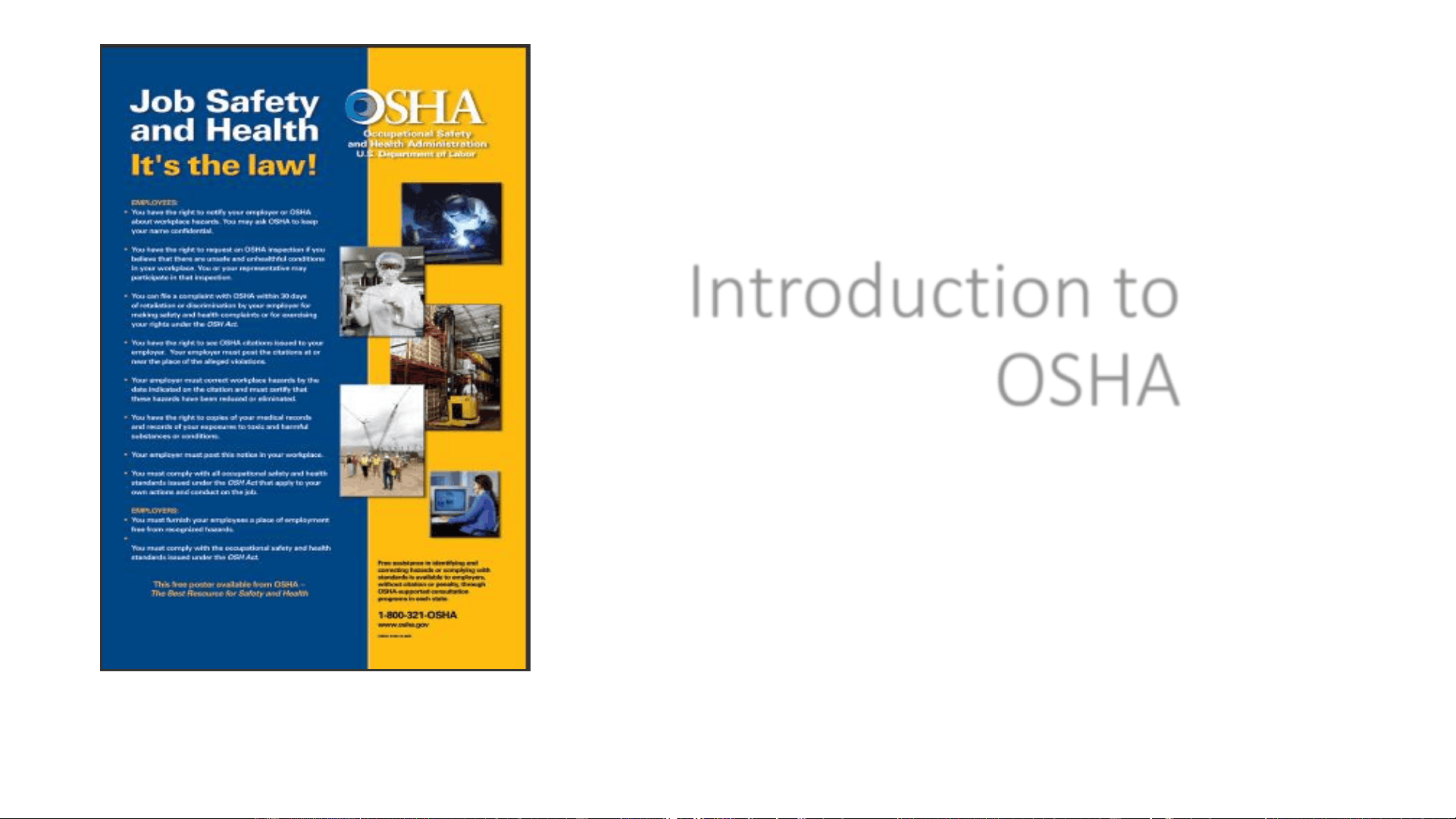

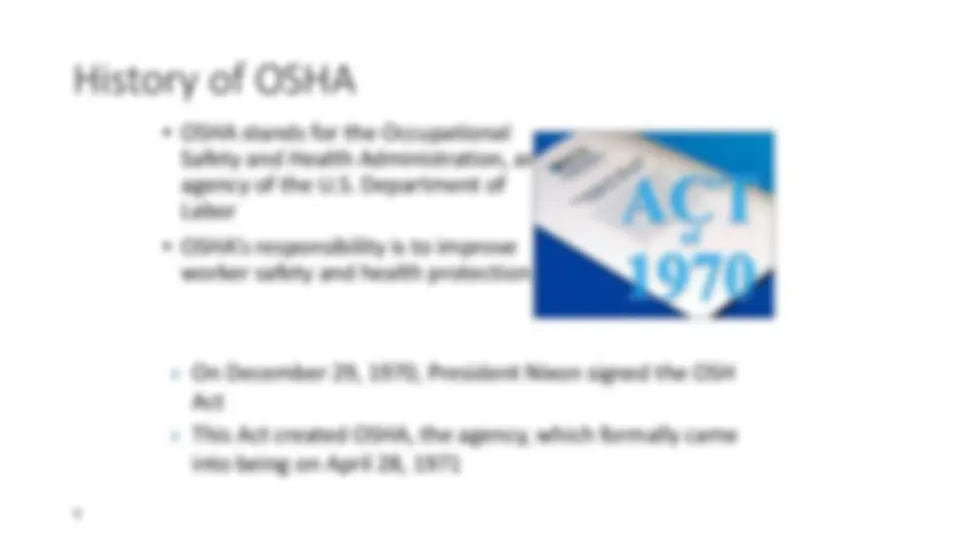
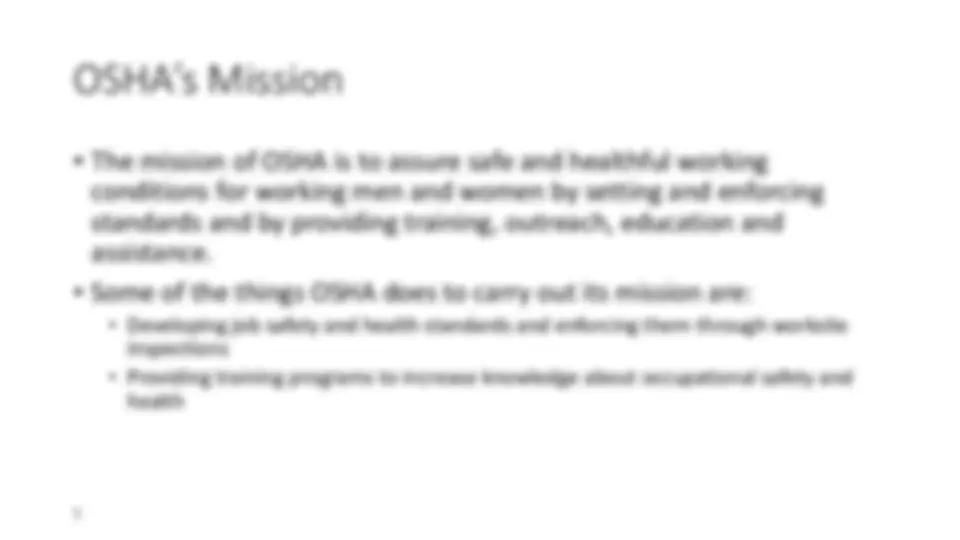
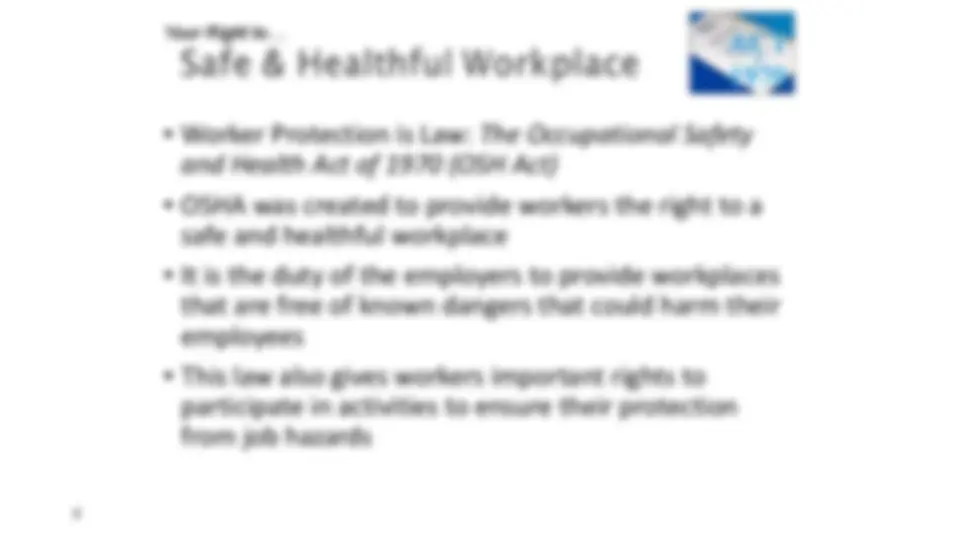
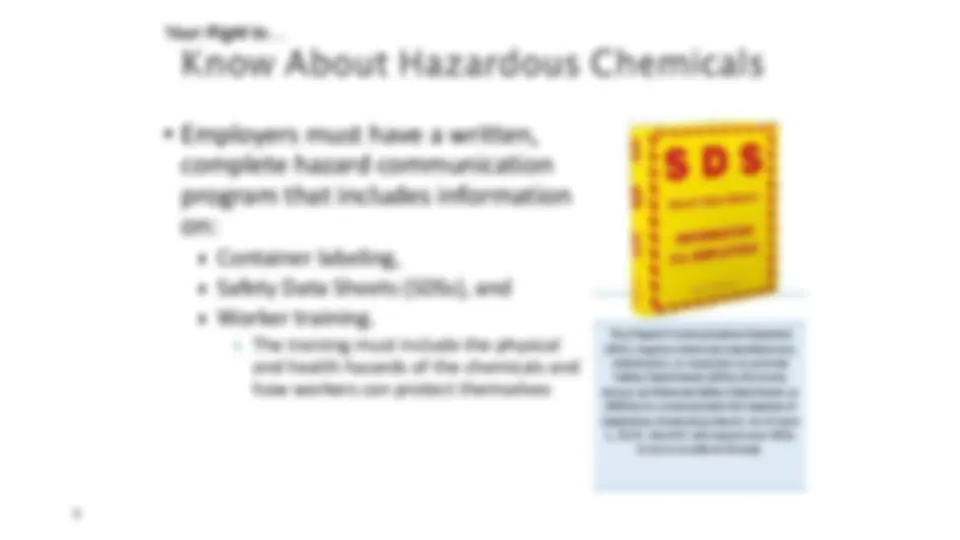
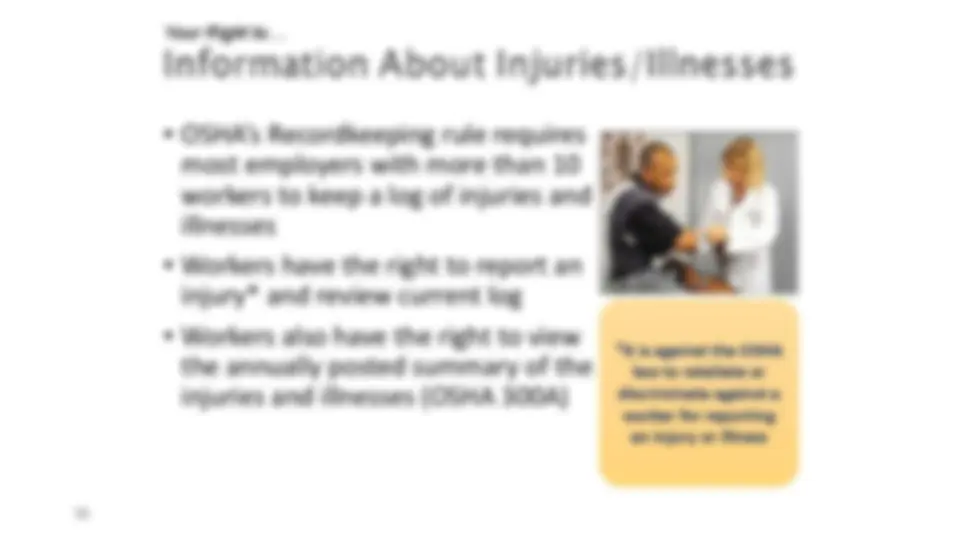
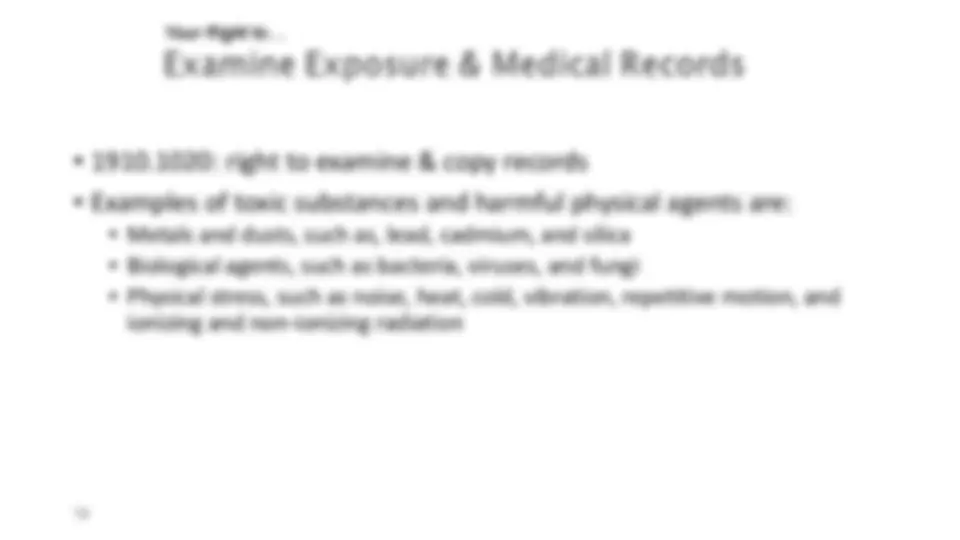
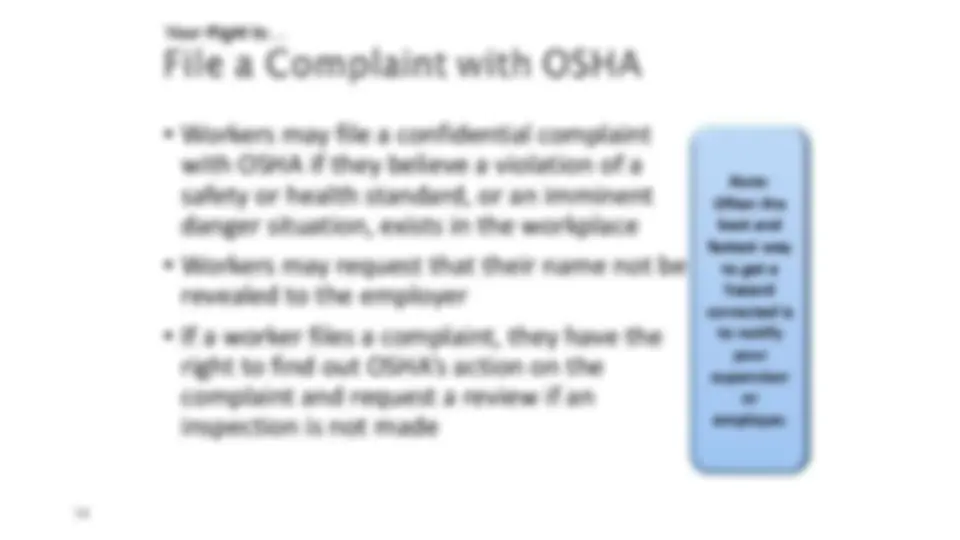
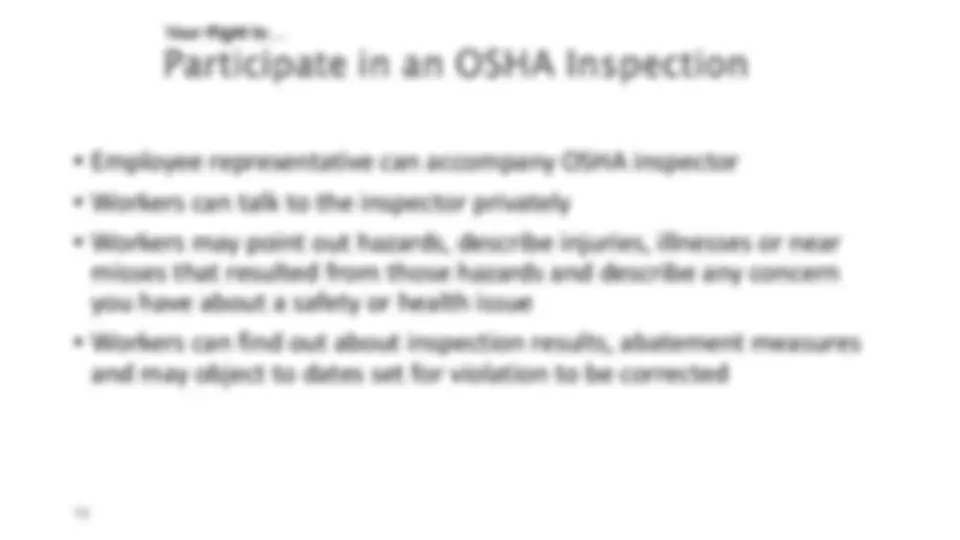
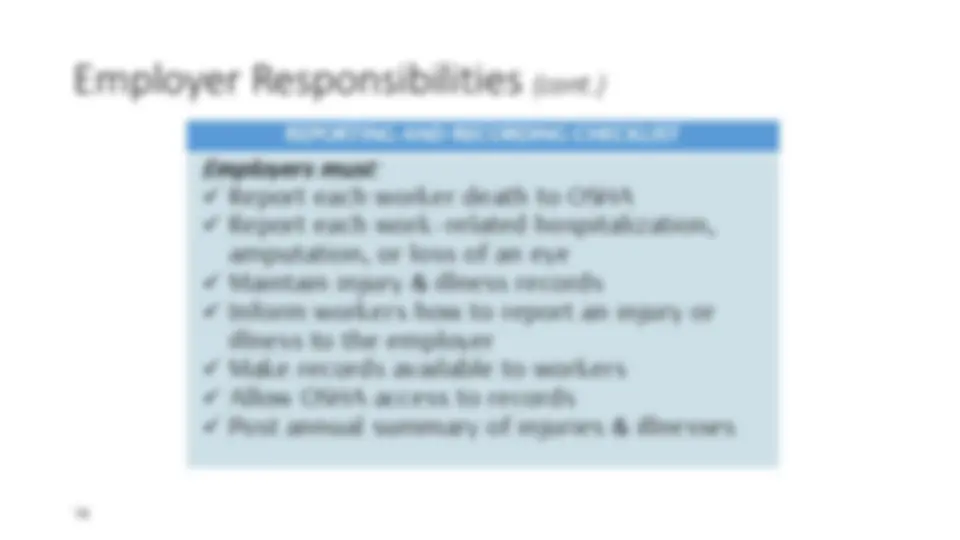
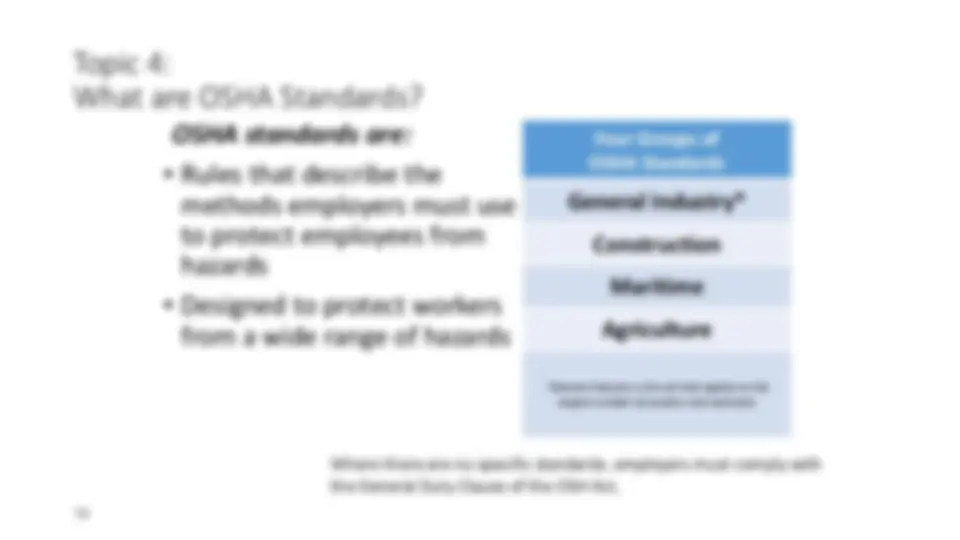
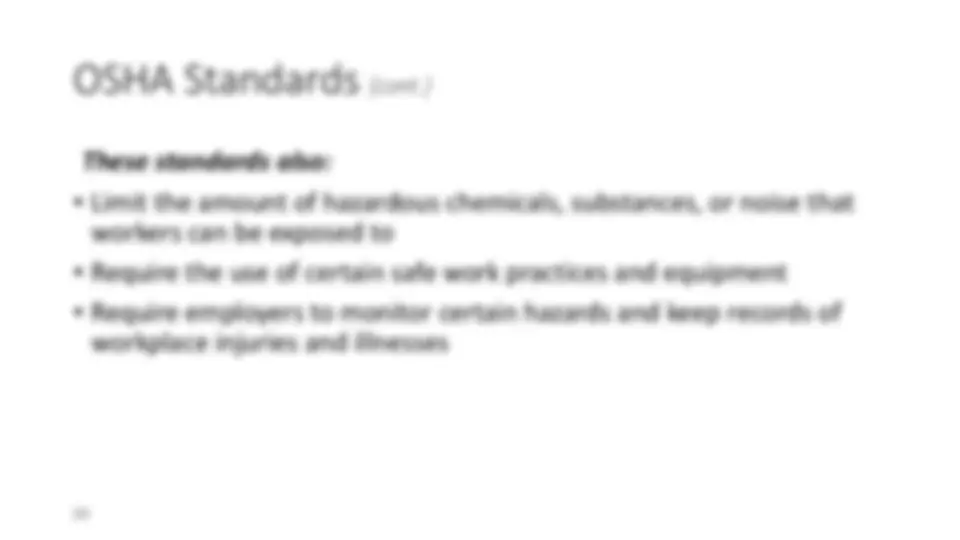
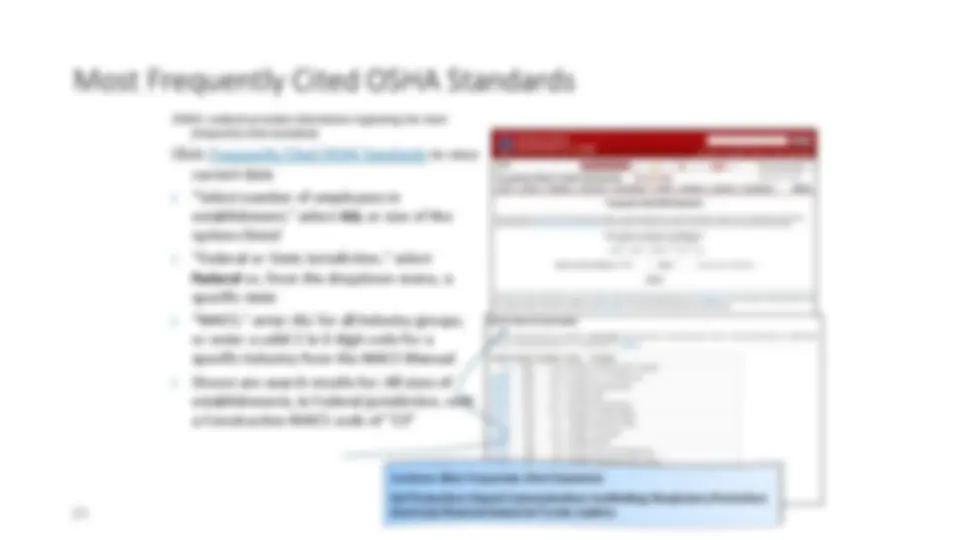
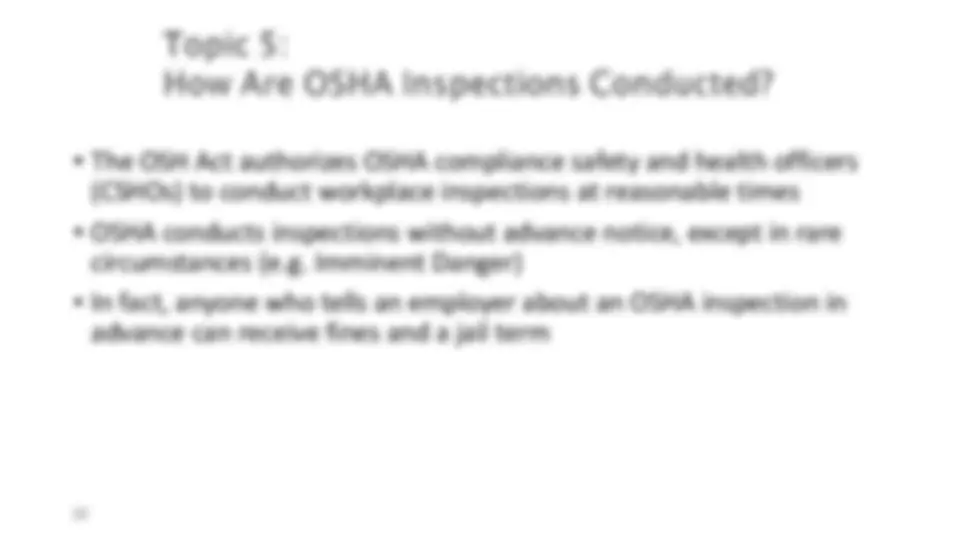

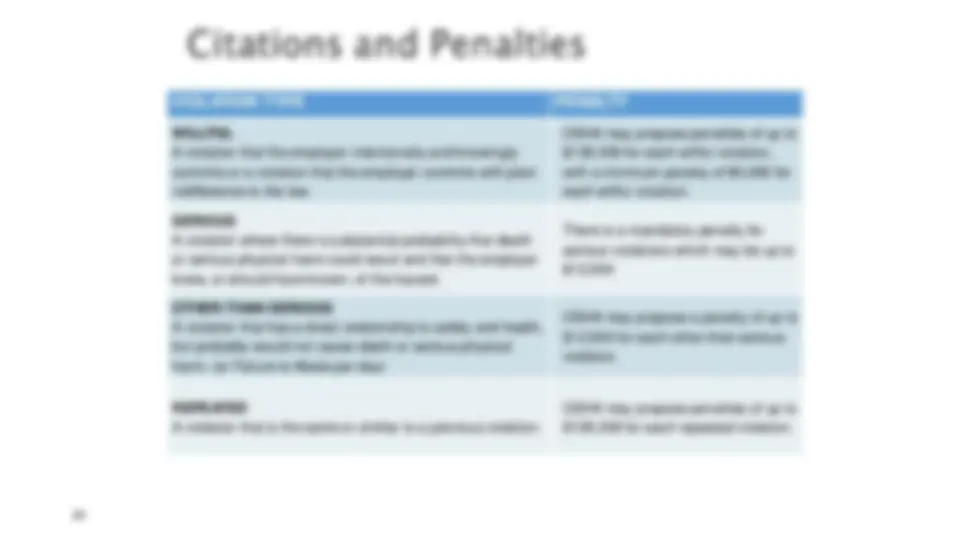


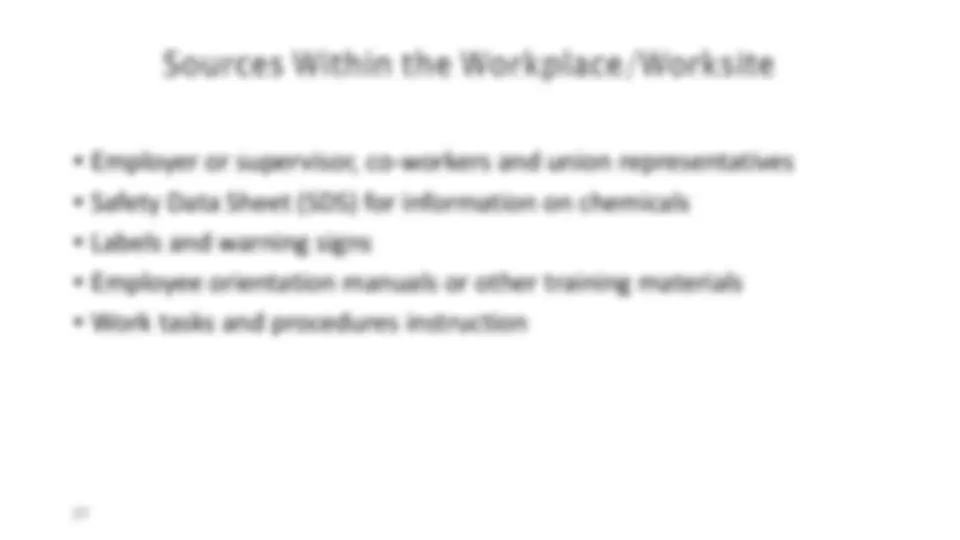
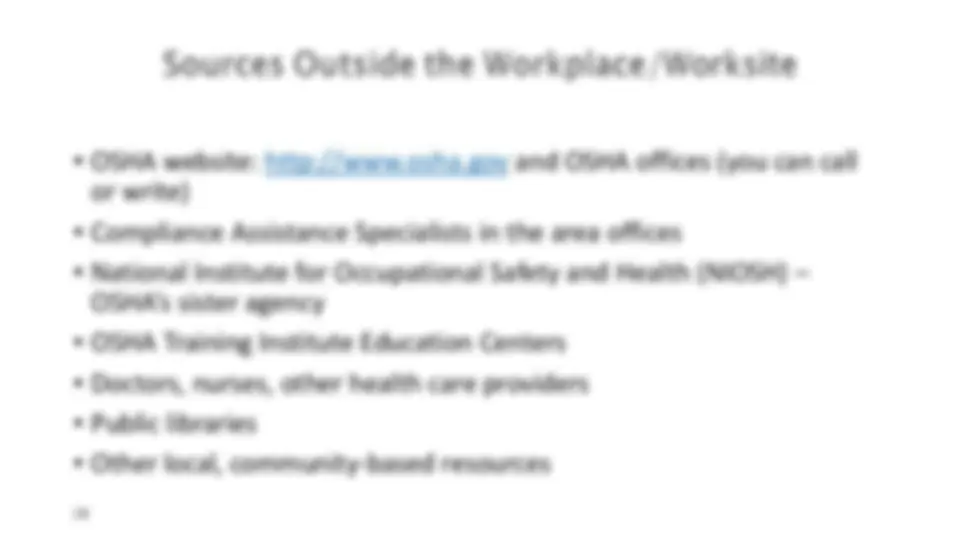
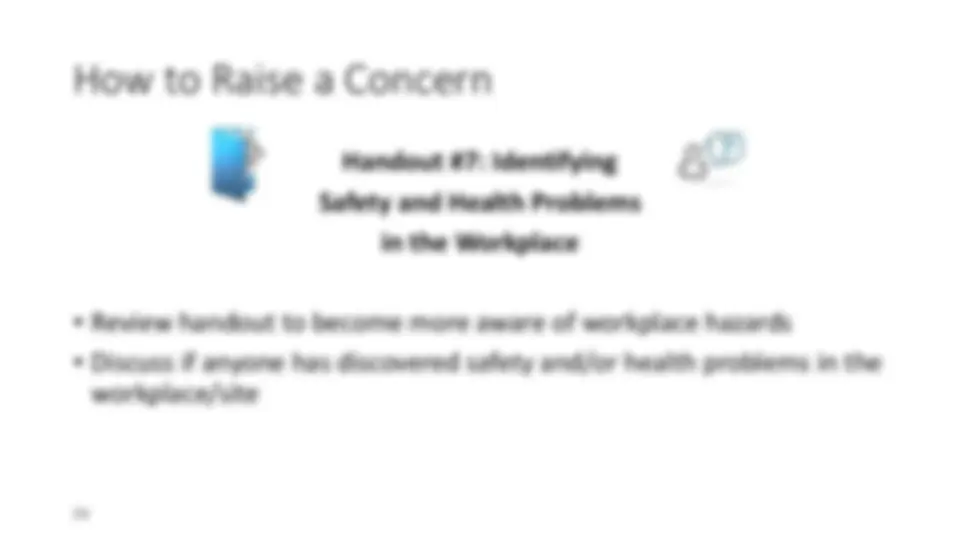
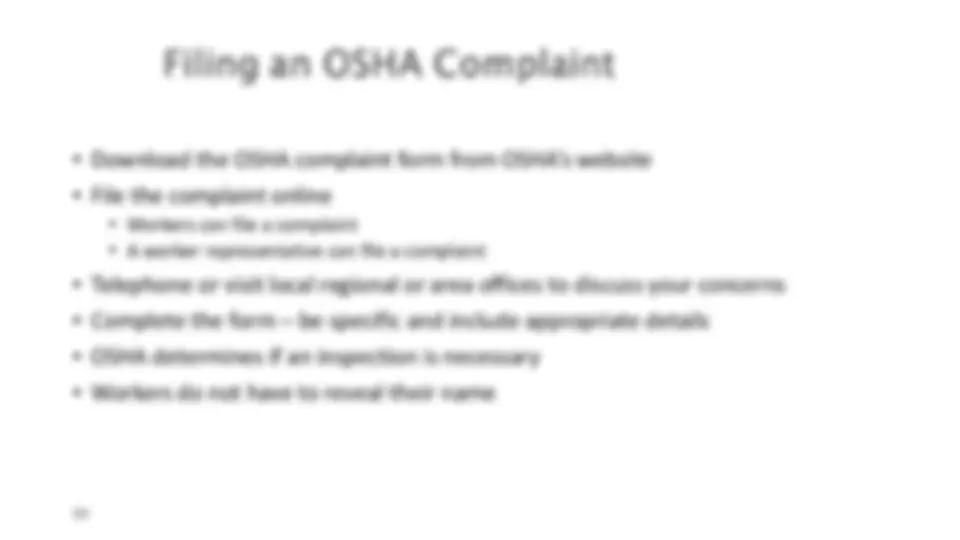
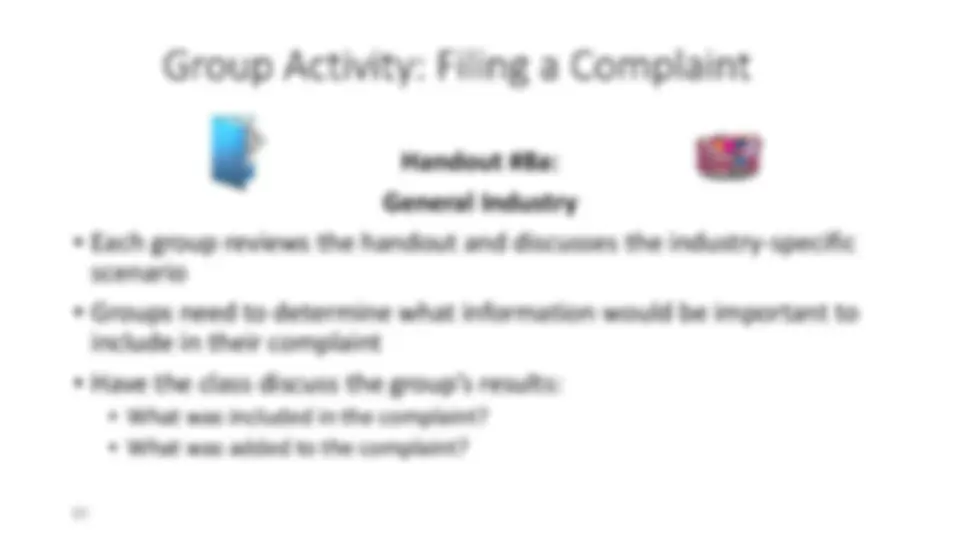
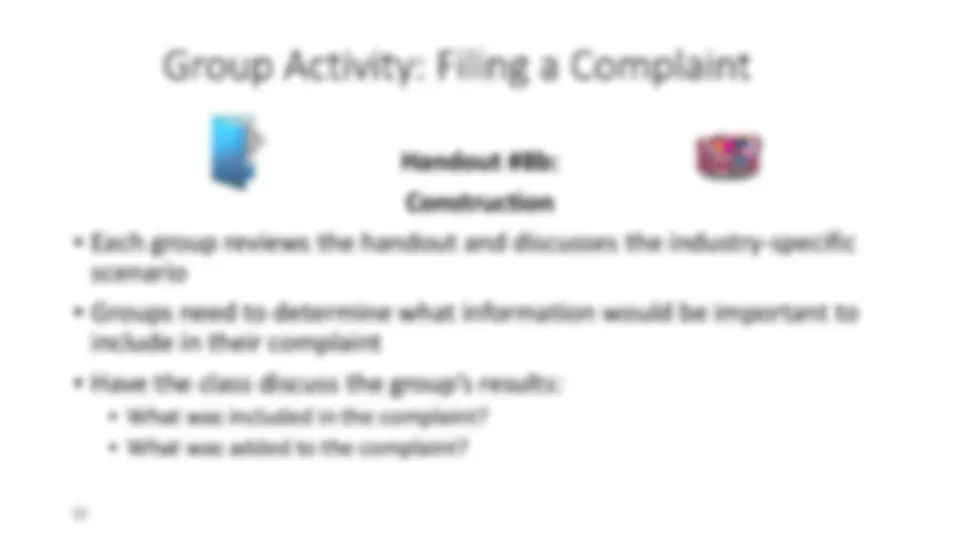
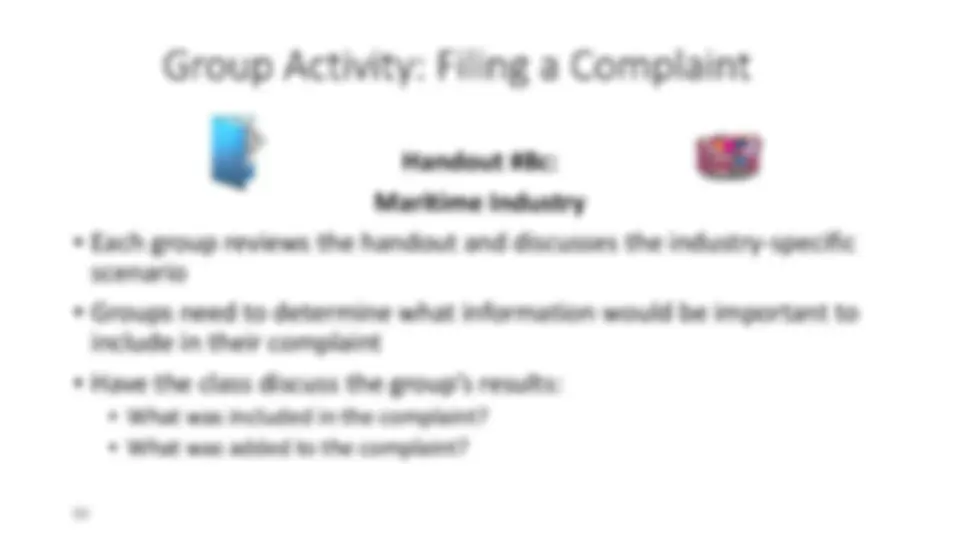
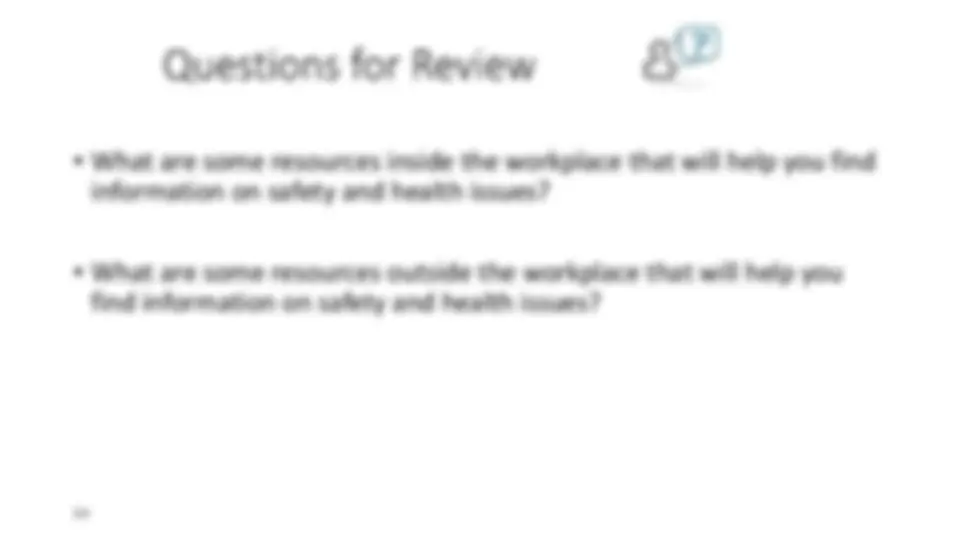
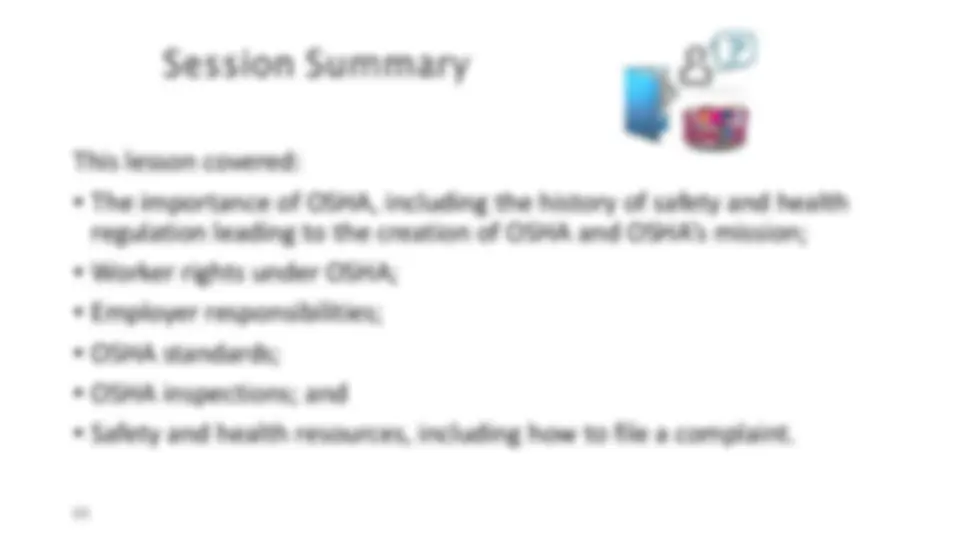



Study with the several resources on Docsity

Earn points by helping other students or get them with a premium plan


Prepare for your exams
Study with the several resources on Docsity

Earn points to download
Earn points by helping other students or get them with a premium plan
Community
Ask the community for help and clear up your study doubts
Discover the best universities in your country according to Docsity users
Free resources
Download our free guides on studying techniques, anxiety management strategies, and thesis advice from Docsity tutors
An introduction to OSHA, the Occupational Safety and Health Administration. It covers the history of OSHA, its mission, and the rights and responsibilities of both workers and employers. The document also explains OSHA standards and the process for filing a complaint. It includes handouts for workers to identify safety and health problems in the workplace and to understand their rights.
What you will learn
Typology: Exercises
1 / 36

This page cannot be seen from the preview
Don't miss anything!





























Directorate of Training and Education OSHA Training Institute
Purpose:
Handout #1: OSHA Poster
OSHA standards are:
These standards also: